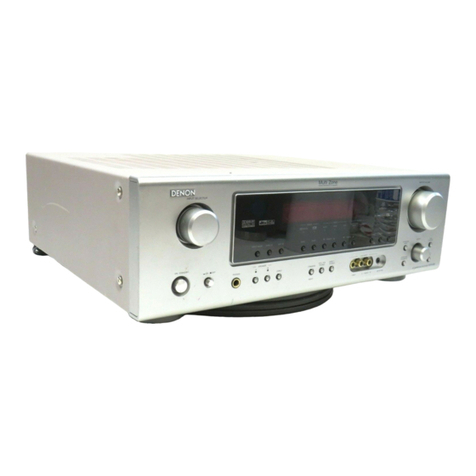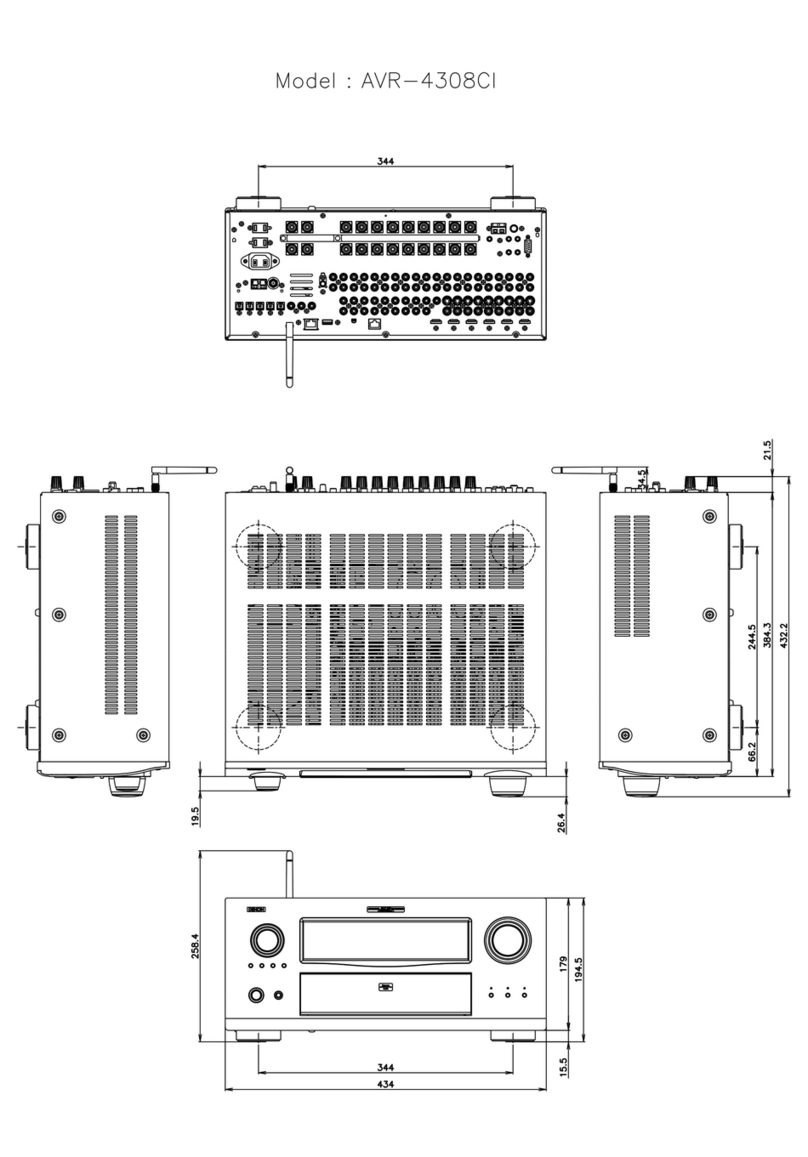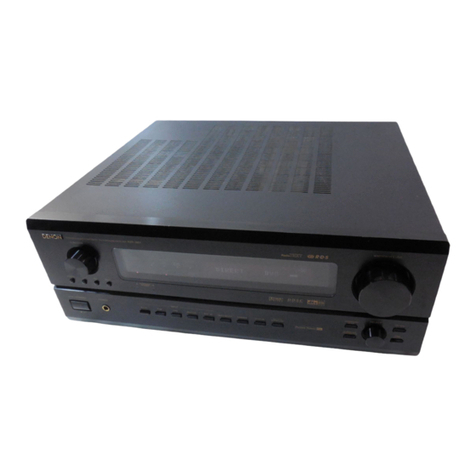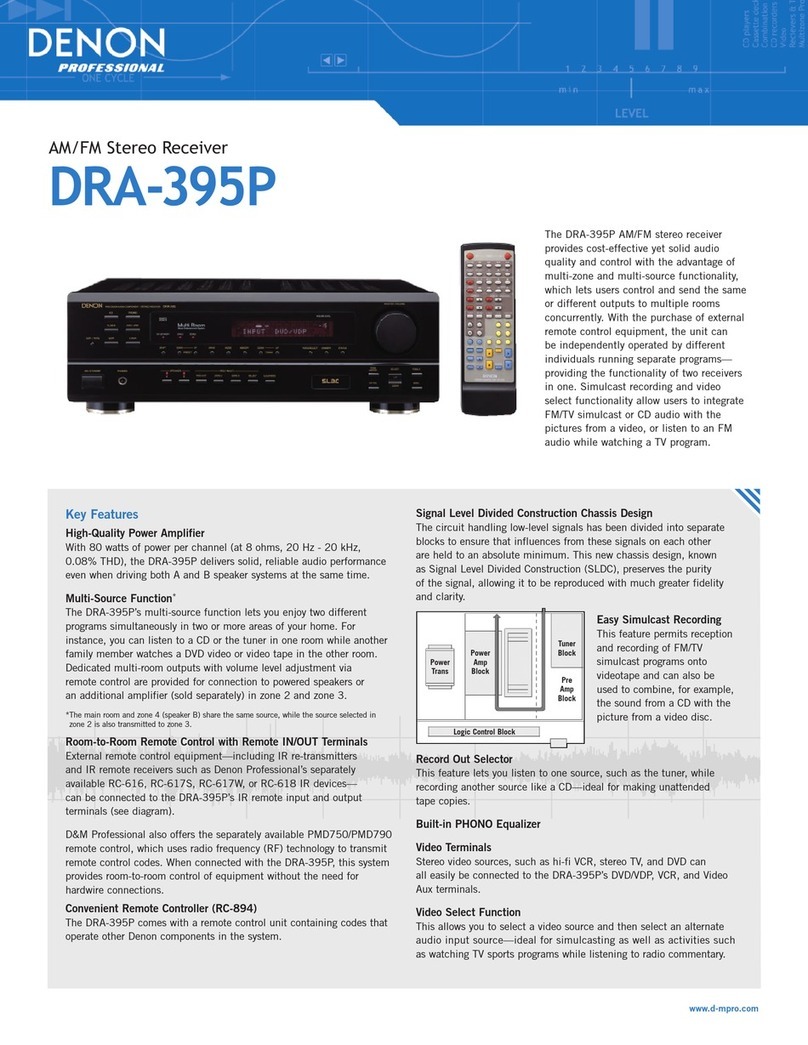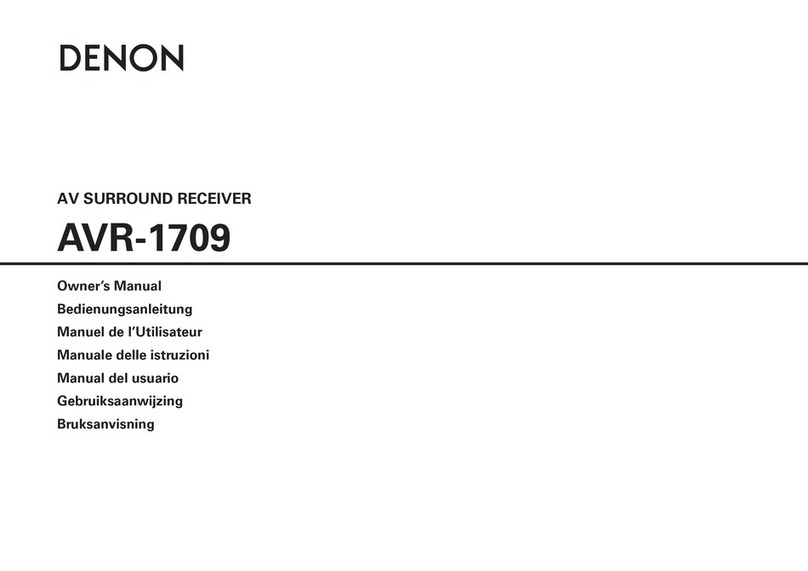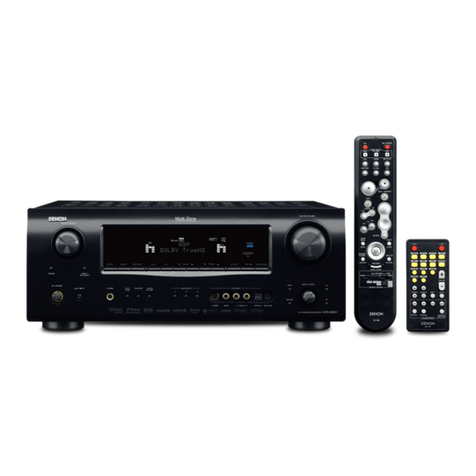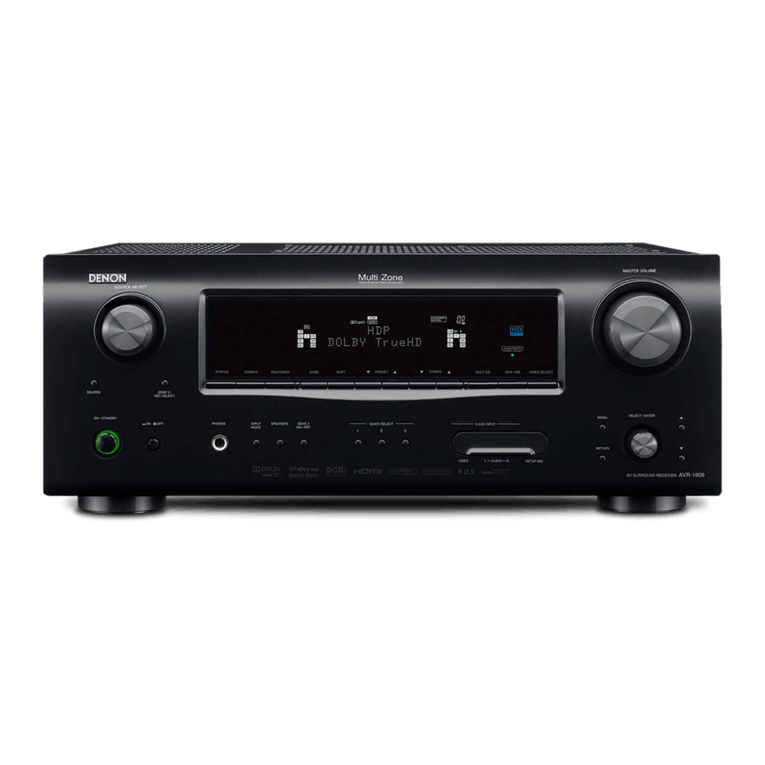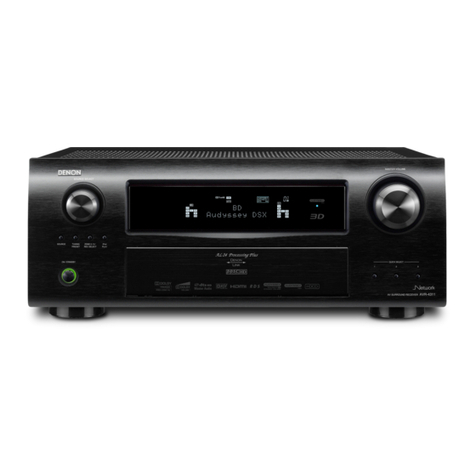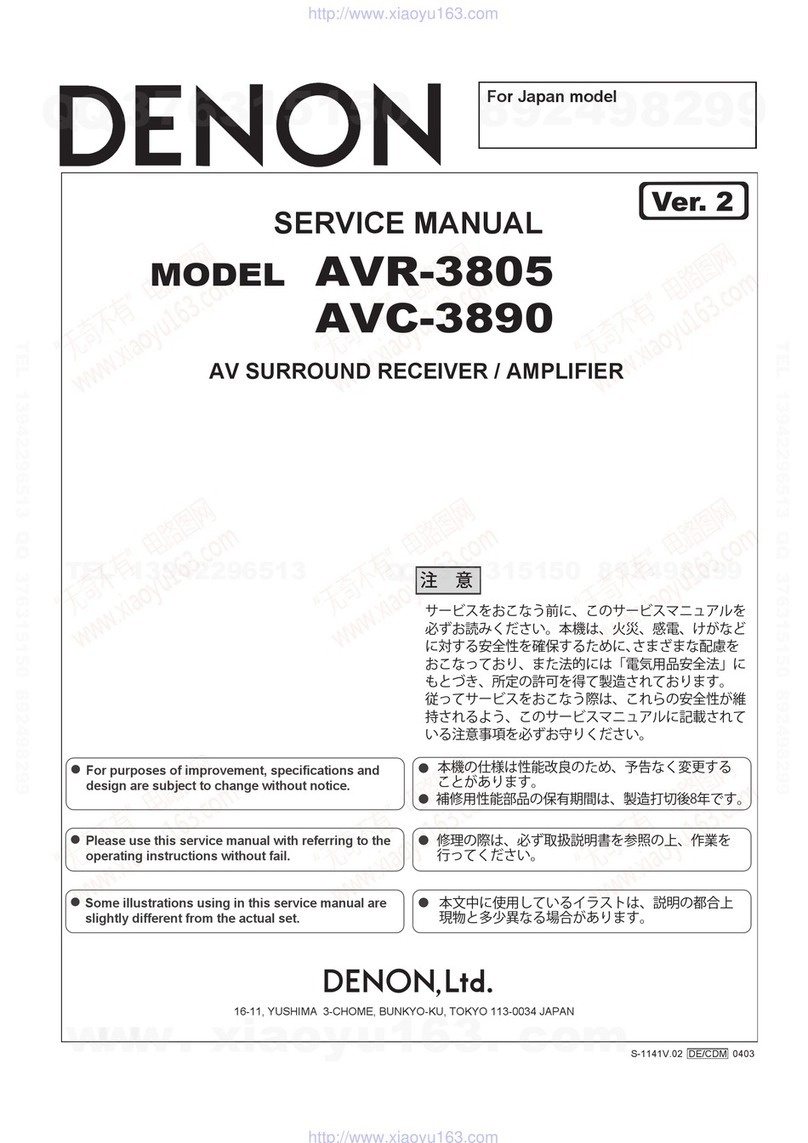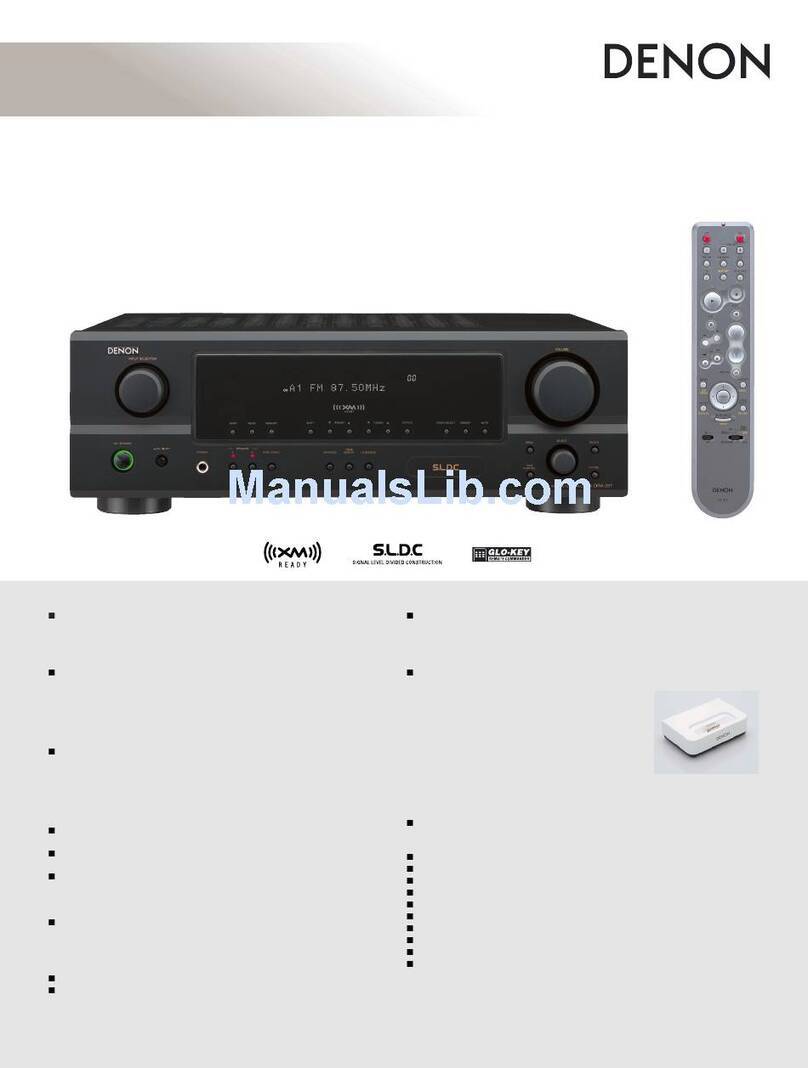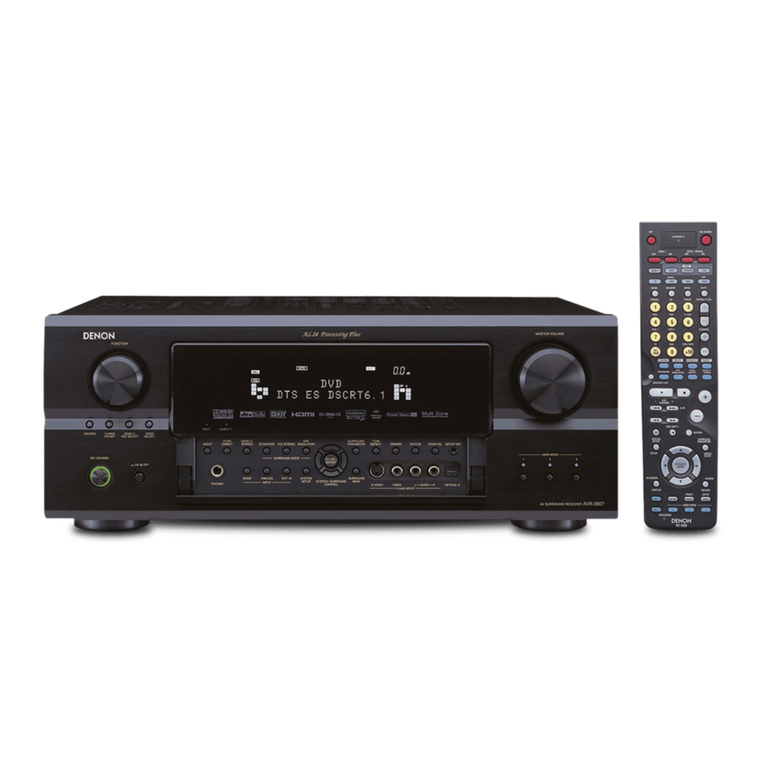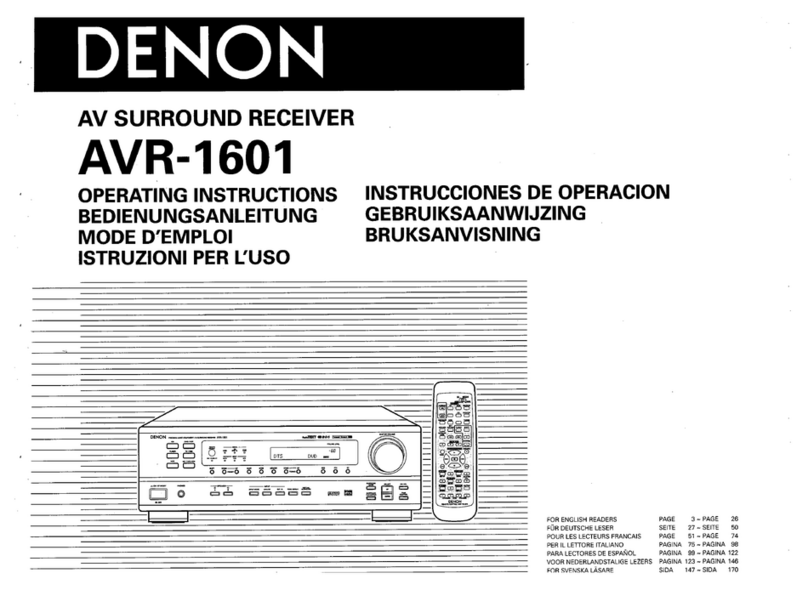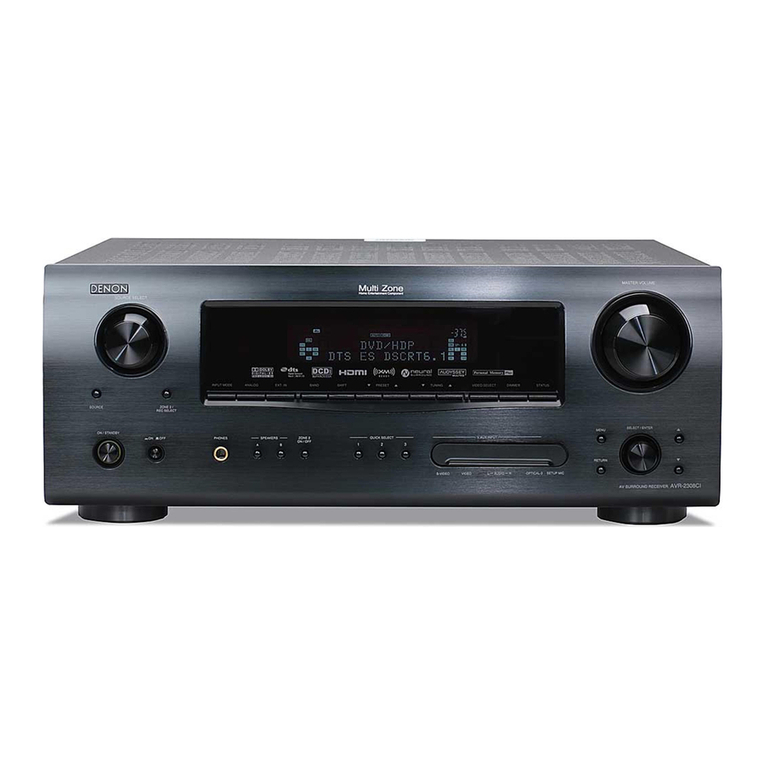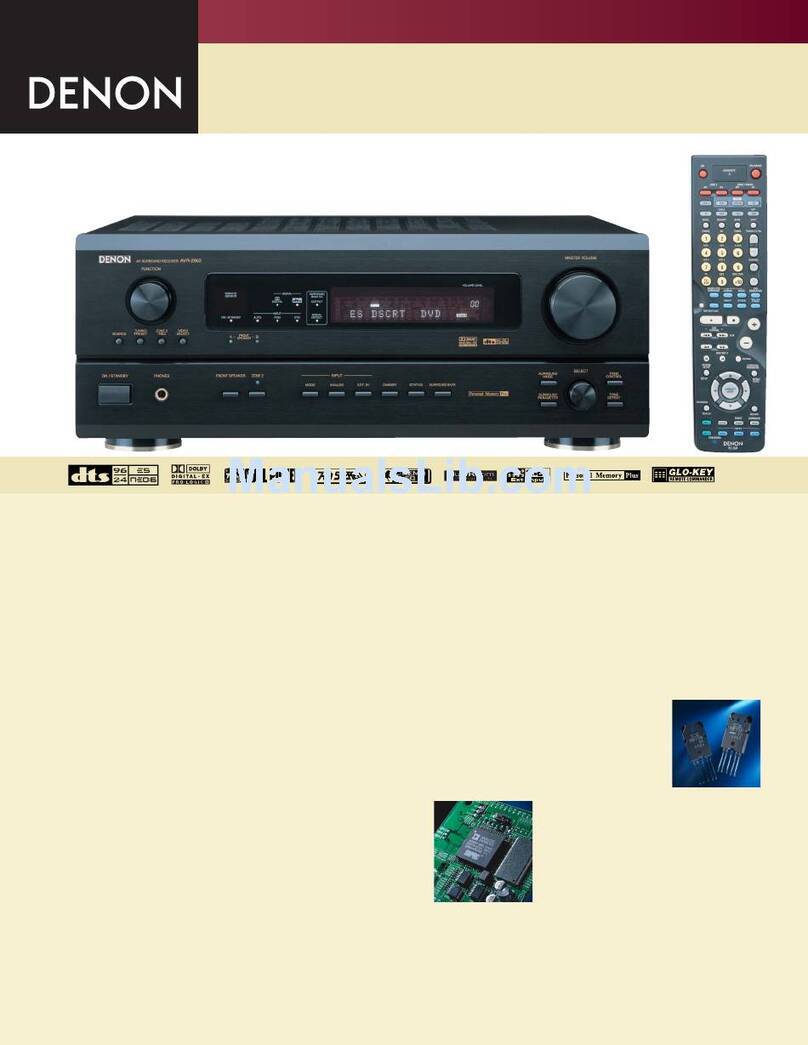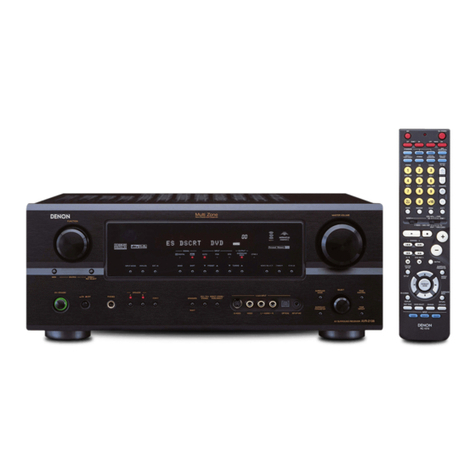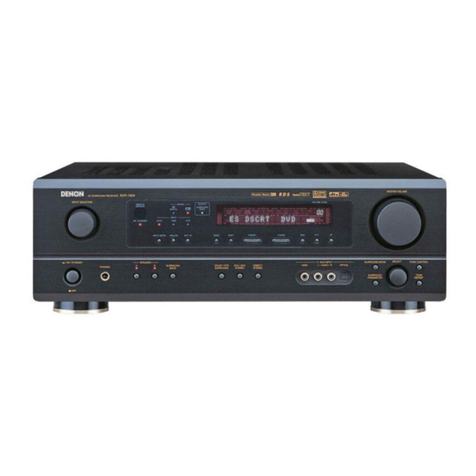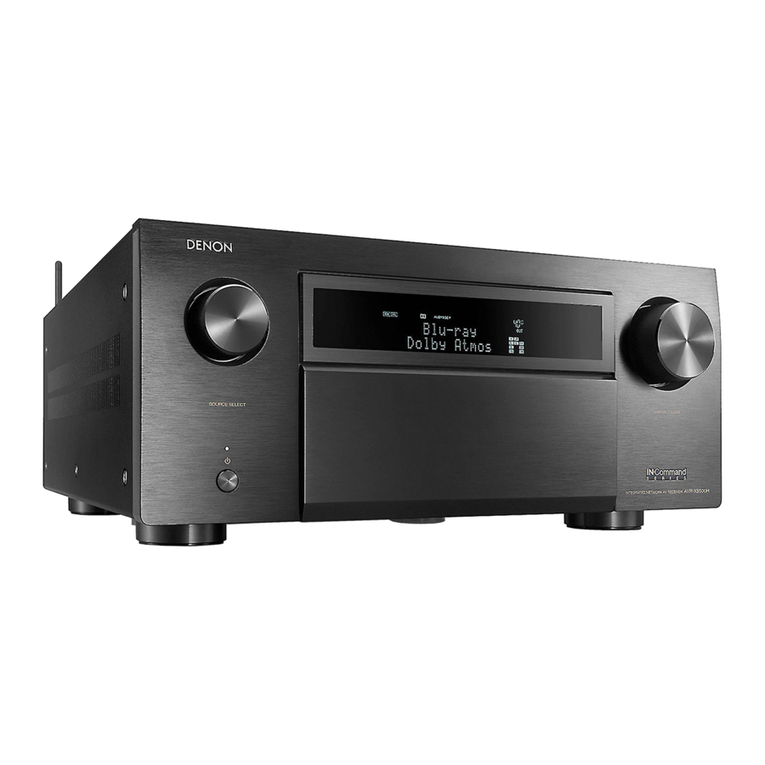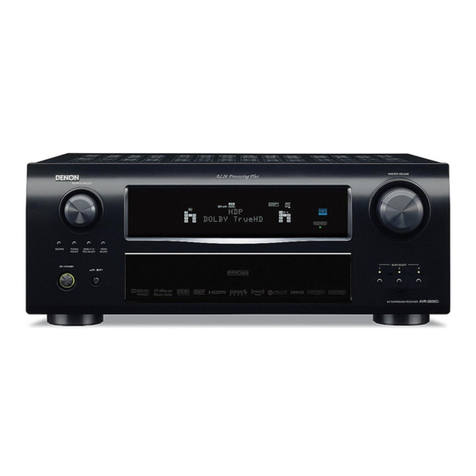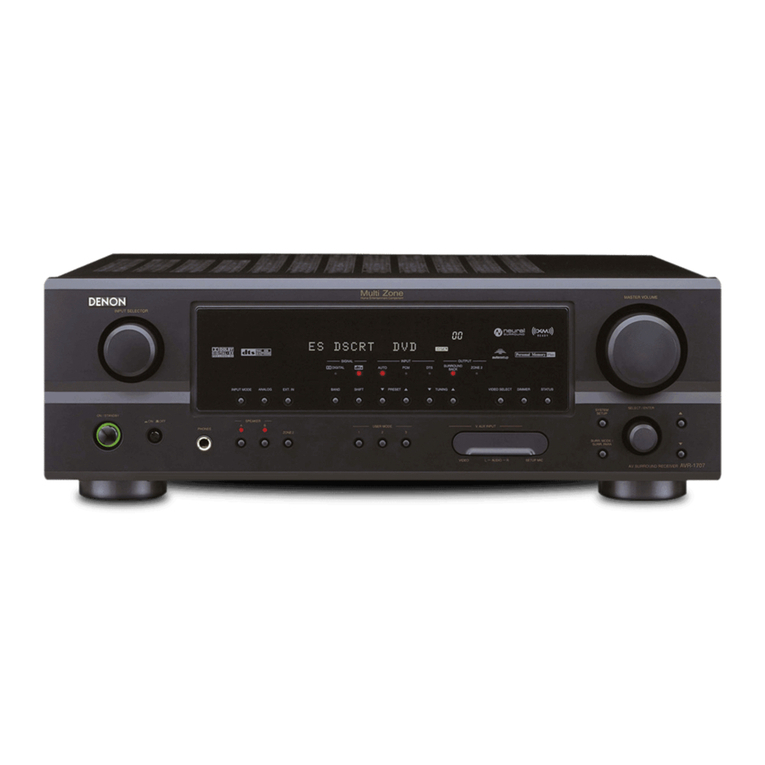
2
CONTENTS
SAFETY PRECAUTIONS..........................................................3
NOTE FOR SCHEMATIC DIAGRAM.........................................4
TECHNICAL SPECIFICATIONS................................................5
DIMENSION...............................................................................5
CAUTIONS IN SERVICING .......................................................6
Initializing INTEGRATED NETWORK AV RECEIVER ..............6
Service Jig.................................................................................6
DISASSEMBLY..........................................................................7
1. FRONT PANEL ASSY ...........................................................9
2. HEAT SINK ASSY ...............................................................10
3. HDMI UNIT ASSY................................................................12
4. TRANS MAIN......................................................................15
SPECIAL MODE......................................................................16
Special mode setting button....................................................16
1. µcom/DSP Version display mode........................................17
2. Errors checking mode (Displaying the protection history)...20
3. Remote ID Setup mode.......................................................22
PROTECTION DIAGRAM........................................................23
4. DIAGNOSTIC MODE
(Video/Audio (signal) path conrmation mode) ...................24
BLOCK DIAGRAM...................................................................29
JIG FOR SERVICING ..............................................................63
WHEN THE MICROPROCESSOR IS
REPLACED WITH A NEW ONE.............................................67
PROCEDURE FOR UPGRADING
THE VERSION OF THE FIRMWARE ....................................67
ADJUSTMENT.........................................................................74
SURROUND MODES AND PARAMETERS............................75
TROUBLE SHOOTING............................................................81
1. POWER...............................................................................81
2. Analog video........................................................................82
3. HDMI/DVI............................................................................88
4. AUDIO.................................................................................97
5. Network/USB.....................................................................100
6. SMPS................................................................................103
CLOCK FLOW & WAVE FORM IN DIGITAL BLOCK...........106
LAEVEL DIAGRAM...............................................................107
PRINTED WIRING BOARDS.................................................113
7CH AMP (COMPONENT SIDE) ..........................................113
7CH AMP (FOIL SIDE)..........................................................113
SMPS (COMPONENT SIDE)................................................114
SMPS (FOIL SIDE) ...............................................................114
SPK_PREOUT (COMPONENT SIDE)..................................115
SPK_PREOUT (FOIL SIDE) .................................................116
INPUT (COMPONENT SIDE) ...............................................117
INPUT (FOIL SIDE)...............................................................118
FUSE (COMPONENT SIDE).................................................119
F_WIDE (COMPONENT SIDE).............................................119
RS232C_CNT (COMPONENT SIDE)...................................119
FUSE (FOIL SIDE) ................................................................119
F_WIDE (FOIL SIDE) ............................................................119
RS232C_CNT (FOIL SIDE)...................................................119
POSISTOR (COMPONENT SIDE)........................................119
POSISTOR (FOIL SIDE) .......................................................119
FRONT (COMPONENT SIDE)..............................................120
V.AUX (FOIL SIDE) ...............................................................120
FRONT (FOIL SIDE) .............................................................120
V.AUX (COMPONENT SIDE)................................................120
GUIDE L (COMPONENT SIDE)............................................121
HDMI FFC (COMPONENT SIDE).........................................121
GUIDE TOP (COMPONENT SIDE).......................................121
HDMI FFC (FOIL SIDE) ........................................................121
GUIDE TOP (FOIL SIDE) ......................................................121
GUIDE L (FOIL SIDE) ...........................................................121
USB (COMPONENT SIDE)...................................................121
HP (COMPONENT SIDE).....................................................121
GUIDE R (COMPONENT SIDE)...........................................121
HP (FOIL SIDE).....................................................................121
GUIDE R (FOIL SIDE)...........................................................121
USB (FOIL SIDE) ..................................................................121
SELECTOR (COMPONENT SIDE).......................................122
RS232C (COMPONENT SIDE).............................................122
SELECTOR (FOIL SIDE) ......................................................122
RS232C (FOIL SIDE) ............................................................122
SIDE_CNT (COMPONENT SIDE) ........................................123
SIDE_CNT (FOIL SIDE)........................................................123
VIDEO (COMPONENT SIDE)...............................................124
VIDEO (FOIL SIDE) ..............................................................125
FRONT CNT (COMPONENT SIDE) .....................................126
FRONT CNT (FOIL SIDE).....................................................127
HDMI (COMPONENT SIDE).................................................128
HDMI (FOIL SIDE) ................................................................129
SCHEMATIC DIAGRAMS......................................................130
USB UNIT..............................................................................130
FRONT UNIT.........................................................................130
AMP UNIT (1/2).....................................................................131
AMP UNIT (2/2).....................................................................132
SPK/PREOUT/REG UNIT (1/4).............................................133
SPK/PREOUT/REG UNIT (2/4).............................................134
SPK/PREOUT/REG UNIT (3/4).............................................135
SPK/PREOUT/REG UNIT (4/4).............................................136
CNT/RS232C UNIT (1/4).......................................................137
CNT/RS232C UNIT (2/4).......................................................138
CNT/RS232C UNIT (3/4).......................................................139
CNT/RS232C UNIT (4/4).......................................................140
INPUT UNIT..........................................................................141
VIDEO UNIT..........................................................................142
SMPS UNIT...........................................................................143
DIGITAL UNIT (1/16).............................................................144
DIGITAL UNIT (2/16).............................................................145
DIGITAL UNIT (3/16).............................................................146
DIGITAL UNIT (4/16).............................................................147
DIGITAL UNIT (5/16).............................................................148
DIGITAL UNIT (6/16).............................................................149
DIGITAL UNIT (7/16).............................................................150
DIGITAL UNIT (8/16).............................................................151
DIGITAL UNIT (9/16).............................................................152
DIGITAL UNIT (10/16)...........................................................153
DIGITAL UNIT (11/16) ...........................................................154
DIGITAL UNIT (12/16)...........................................................155
DIGITAL UNIT (13/16)...........................................................156
DIGITAL UNIT (14/16)...........................................................157
DIGITAL UNIT (15/16)...........................................................158
DIGITAL UNIT (16/16)...........................................................159
WIRING DIAGRAM................................................................160
EXPLODED VIEW..................................................................161
PARTS LIST OF EXPLODED VIEW......................................163
PACKING VIEW.....................................................................166
PARTS LIST OF PACKING & ACCESSORIES.....................167
SEMICONDUCTORS.............................................................168
1. IC's ....................................................................................168
2. FL DISPLAY.......................................................................199
PARTS LIST OF P.C.B. UNIT ................................................201
PCB FRONT ASSY ...............................................................201
PCB 7CH_AMP ASSY...........................................................203
PCB CNT ASSY ....................................................................208
PCB MAIN ASSY...................................................................209
PCB INPUT ASSY.................................................................213
PCB VIDEO ASSY ................................................................215
PCB SMPS ASSY .................................................................217
PCB HDMI ASSY ..................................................................219
